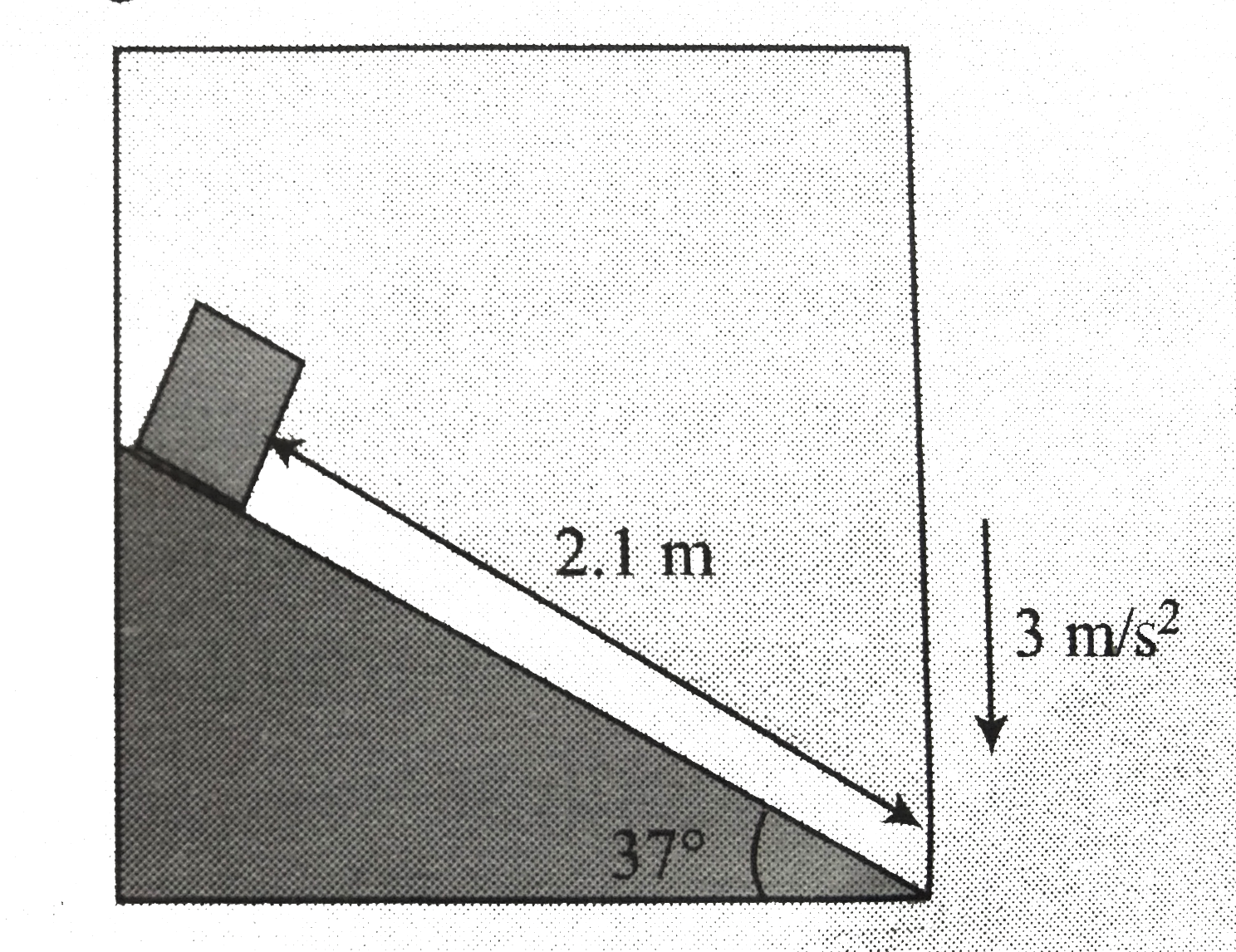A bob of mass 0.3 kg falls from the ceiling of an elevator moving down with a uniform speed of 7ms−1. If hits the floor of the elevator (length of the elevator = 3m) and does not rebound. What is the heat produced by the impact ? Would your answer be different if the elevator were stationary ?
P.E of bolt= mgh = 0.3×9.8×3×8.82J
The bolt does not rebound. So the whole of the energy is converted into heat. Since the value of the acceleration due to gravity is the same in all inertial system, therefore the answer will not change even if the elevator is stationary.
Topper's Solved these Questions
Similar Questions
A block of mass 2 kg rests on the floor of an elevator , which is moving down with an acceleration 'g' , then the apparent weight of the block is [ take g = 10m/s2 ]
View SolutionA simple pendulum of length 1 feet suspended from the ceiling of an elevator takes π3 seconds to complete one oscilation. Find the acceleration of the elevator.
View Solution
Knowledge Check
A bolt of mass 0.2 kg falls from the ceiling of an elevator moving down with a uniform speed of 5ms−1. It hits the floor of the elevator (length of the elevator = 5 m) and does not rebound. The amount of heat produced by the impact is (Take g=10ms−2)
A5 JB10 JC15 JD20 J
A block of mass 1kg is kept on the tilted floor of a lift moving down with acceleration 3ms−2. If the block is released from rest as shown, what will be the time taken by block to reach the bottom? What is the normal reaction on the block during the motion?

View SolutionAn elevator without a ceiling is ascending up with an acceleration of 5ms−2. A boy on the elevator shoots a ball in vertical upward direction from a height of 2 m above the floor of elevator. At this instant the elevator is moving up with a velocity of 10ms−1 and floor of the elevator is at a height of 50 m from the ground. The initial speed of the ball is 15ms−1 with respect to the elevator. Consider the duration for which the ball strikes the floor of elevator in answering following questions. (g=10ms−2)
4. The maximum separation between the floor of elevator and the ball during its flight would be
View SolutionAn elevator without a ceiling is ascending up with an acceleration of 5ms−2. A boy on the elevator shoots a ball in vertical upward direction from a height of 2 m above the floor of elevator. At this instant the elevator is moving up with a velocity of 10ms−1 and floor of the elevator is at a height of 50 m from the ground. The initial speed of the ball is 15ms−1 with respect to the elevator. Consider the duration for which the ball strikes the floor of elevator in answering following questions. (g=10ms−2)
3. Displacement of ball with respect to ground during its night would be
View SolutionAn elevator without a ceiling is ascending up with an acceleration of 5ms−2. A boy on the elevator shoots a ball in vertical upward direction from a height of 2 m above the floor of elevator. At this instant the elevator is moving up with a velocity of 10ms−1 and floor of the elevator is at a height of 50 m from the ground. The initial speed of the ball is 15ms−1 with respect to the elevator. Consider the duration for which the ball strikes the floor of elevator in answering following questions. (g=10ms−2)
1. The time in which the ball strikes the floor of elevator is given by
View SolutionAn elevator without a ceiling is ascending up with an acceleration of 5ms−2. A boy on the elevator shoots a ball in vertical upward direction from a height of 2 m above the floor of elevator. At this instant the elevator is moving up with a velocity of 10ms−1 and floor of the elevator is at a height of 50 m from the ground. The initial speed of the ball is 15ms−1 with respect to the elevator. Consider the duration for which the ball strikes the floor of elevator in answering following questions. (g=10ms−2)
2. The maximum height reached by ball, as measured from the ground would be
View SolutionA man (mass =50 kg) is in an elevtor with is moving with acceleration 0.49m/s2 upwards. Find normal reaction exerted by man on floor of the elevator.
View SolutionA pendulum bobof masss 50 g is suspended from the ceiling of an elevator. Find the tension in the string if the elevator a. goes up with acceleration 1.2ms2, b. goes up with deceleration 1.2ms2, c. goes up with uniform velocity, d. goes down with acceleration 1.2ms2 e. goes down with deceleration 1.2ms2 and f. goes downwith uniform velocity.
View Solution
